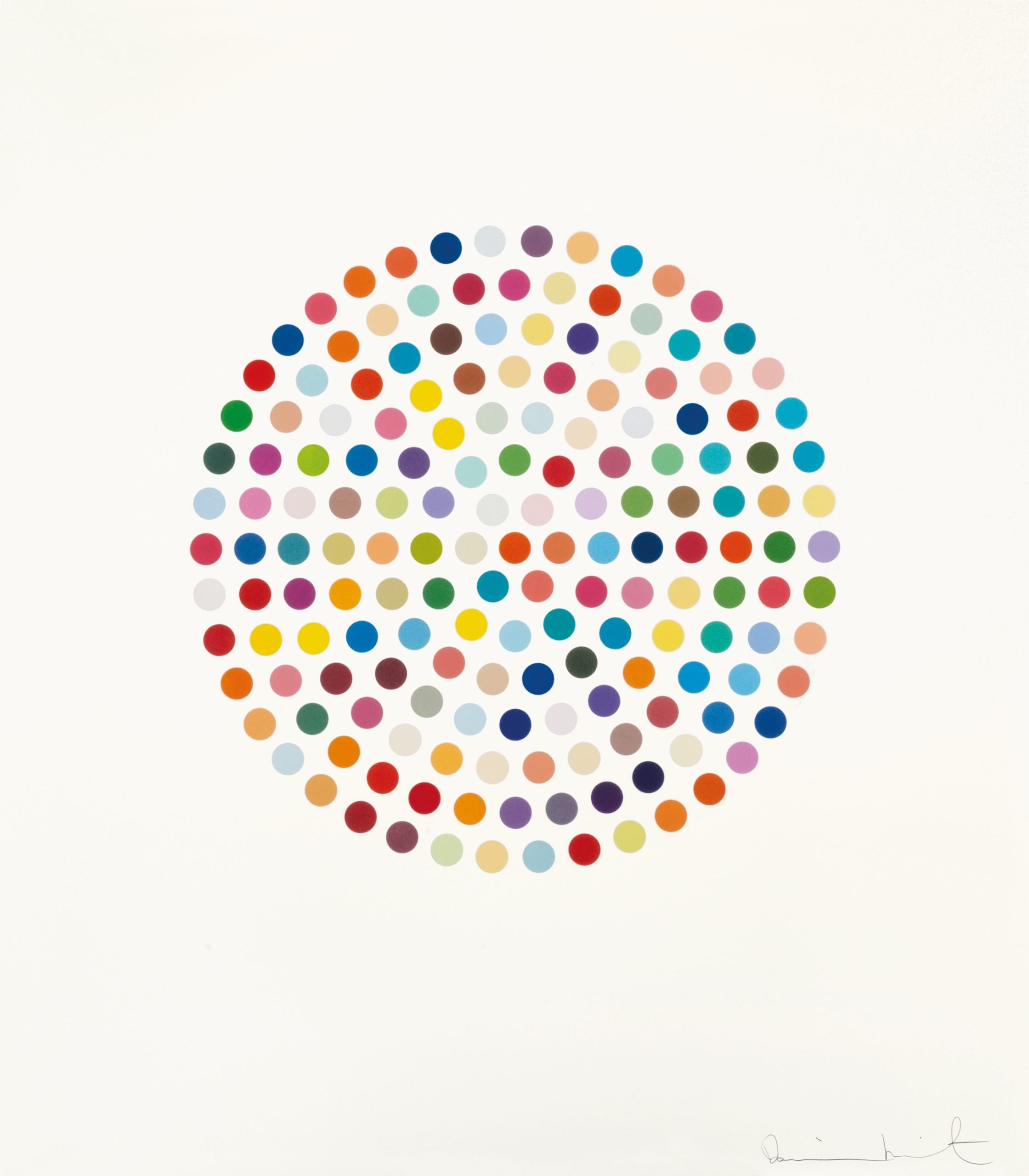
English artist Damien Hirst (b. 1965) first rose to fame in the late 1980s and early 1990s as part of the Young British Artists (YBAs), a loose group of artists operating in London, many of whom attended Goldsmith’s undergraduate fine arts program. Staging artist-led and executed shows in untraditional spaces like warehouses and factories, the YBA’s had a reputation for their shock value. That sensationalism has followed Hirst for the better part of his career, and his work has continued to be a source of widespread fascination.
Damien Hirst, Covenant (2013). Est. $18,000–$25,000.
Some of Hirst’s most famous bodies of work include dead animals—from an immense tiger shark to a small calf—submerged in tanks of formaldehyde, as well as series in more traditional mediums like painting and prints that feature skulls or butterflies. But there is one particular motif that crops up time and again in Hirst’s work: colorful spots, examples of which can be found in Artnet Auctions’ sale Damien Hirst: For the Love of God, now live for bidding through September 12, 2024.
“Hirst’s spots have since become one of the art world’s most recognizable images and they best exemplify the artist’s motto of ‘pinning down the joy of color,'” says Artnet Auctions Specialist Laetitia Guillotin. “We are particularly thrilled to be offering a beautiful impression of Cocarboxylase from his celebrated 2010 ‘Woodcut Spots’ series alongside other great examples of Damien Hirst’s interest in spots within his printmaking practice, including Cephalothin (2007) and Histidyl (2008), and unique impressions from his seminal ‘The Currency’ series, released in 2021.”
Damien Hirst, Cocarboxylase (from 12 Woodcut Spots) (2012)
Damien Hirst, Cocarboxylase (from 12 Woodcut Spots) (2012). Est. $25,000–$35,000.
Spots first manifested in Hirst’s work in 1986, a couple years prior to the first group show “Freeze” with the YBAs in 1988, marking the beginning of a career-spanning exploration. And spots were ultimately incorporated into “Freeze” when Hirst created two paintings directly on the warehouse wall, which were titled Edge and Row. From this point forward, Hirst developed a system of rules for producing the spots, which include that no two spots are the same color (though some are so similar they might appear to be at first glance), they must be perfectly circular, evenly space, and adhere to a grid or other strata-like pattern.
Damien Hirst, Histidyl (2008). Est. $$7,000–$10,000.
Hirst is also very specific about naming his spot works. Each derives their title from a chemical, like in Cephalothin (2007), ones that are commonly found in pharmaceuticals. In light of this, each spot evokes the form of a pill, and taken overall a set of medication. Beyond the symbolic, Hirst’s spots also engage with some of the core tenets of art making. Produced by hand, the body of work promotes questions around mechanical reproduction, the hand of the artist, and the limits of exactitude. They can also be understood as studies in color theory a la Josef Albers, wherein the specific pattern and hues they are produced in create different effects.
The spot compositions are Hirst’s largest, ongoing body of work, and reportedly the artist will or is in the process of creating a piece with one million spots, which by some estimates may take up to nine years to complete—a true culmination of a careers-worth of spots.
Damien Hirst: For the Love of God is now live for bidding through September 12, 2024.